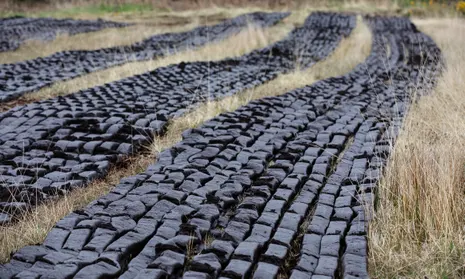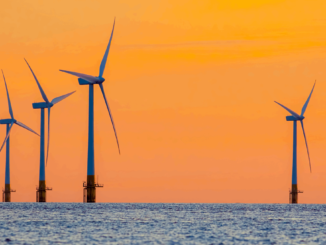
This was supposed to be the year Ireland got serious about protecting its bogs but some of those hopes are wafting up in smoke as households burn peat to save on energy bills.
The soaring cost of oil and gas has reinvigorated the ancient practice of cutting and burning turf, a fuel that hurts the environment but can save a family thousands of euros, especially as temperatures drop to freezing.
Earlier this year the government introduced curbs to peat cutting to protect Ireland’s bogs – which are important carbon sinks and sources of biodiversity – but Europe’s energy crisis has boosted what is supposed to be an anachronism. It costs approximately €500 to heat a household with peat for a year versus several thousand euros for more climate-friendly sources of energy.
“People are glad to have turf. It’s like having an oilwell in your own back yard,” said Michael Fitzmaurice, an independent member of parliament and chair of the Turf Cutters and Contractors Association. An average household that relies on peat consumes 10 to 12 tonnes per year, he said. “It’s security of energy.”
Niall Ó Brolcháin, a researcher at the Insight Centre for Data Analytics at the National University of Ireland, said consumers faced a pinch point. “The financial factor is a much stronger motivation than saving the planet. People are facing an immediate crisis.”

Meanwhile people across Europe are turning to solid fuels, with Germany experiencing a wave of thefts of trees and woodpiles in forests.
In Ireland, anecdotal evidence suggests there has been a sizeable increase in the use of so-called turbary rights which allow people to cut peat, said Ó Brolcháin, a former mayor of Galway city. “In many cases turbary rights had lapsed but people are using them again all of a sudden. There is plenty of evidence of people selling peat door to door. It’s quite understandable, given the economics.”
People in rural areas traditionally cut peat sods in spring and burn them in winter. There are no official statistics about how much was cut or stockpiled. Ó Brolcháin estimates an increase from last year ranging from 30% to 200%. “Last year I drove around Connemara looking for piles of turf and it was hard to find them. This year it was really easy.”
Marc Ó Cathasaigh, a member of parliament with the Green party, which is part of the ruling coalition, also cited anecdotal evidence of increased turf cutting. Though hard to quantify it represented a “step backwards”, he said. “Our bogs are important for carbon sequestration, water management and biodiversity. They are much more valuable to us as bogs rather than as fuel.”
Ó Cathasaigh said fuel allowances and energy credits had cushioned households but some still relied on peat, coal and wood, adding to chimney smoke. “Air quality affects health, one follows the other.”
Ireland’s rural inhabitants survived for centuries by draining bogs and using peat as fuel. A semi-state company, Bord na Móna, cut turf on an industrial scale. Storytelling by a blazing hearth embodied the national identity.
Attitudes began to change in the 1990s. Burning smoky fuels was banned in Dublin and in 2018, Bord na Móna announced the phasing out of its commercial turf cutting. The government banned the sale of turf, smoky coal, and wet wood in shops or online in October.
But fearing a rural backlash, it allowed families living near remaining bogs to continue cutting turf for domestic use. Almost 14% of households do so, including 4% for whom it is a primary source of heating, according to an Environmental Protection Agency study. The European Commission has threatened to impose sanctions on Ireland unless it curbs peat cutting in special areas of conservation.
Fitzmaurice hopes families can continue cutting and burning turf, saying it bolsters Ireland’s energy security. “If you have something in your own country you should use it rather than be bringing in something from Saudi Arabia or Canada.”
John Dore, a spokesperson for the Kildare Turf Cutters Association, said he felt sorry for households facing big energy bills. “I wouldn’t like to be a tight-budgeted person paying for oil and gas. It won’t make any difference to me because I’ve got the turf.”

People in Germany, meanwhile, have turned to wood. The Consortium of German Forest Owners Associations says more people are collecting wood – and that professional thieves are stealing it for firewood and building materials, with losses in recent months amounting to millions of euros.
Typically, thieves drive heavy vehicles into forests at night and filch felled trees that are awaiting collection. In one case, criminals near Königs Wusterhausen, outside Berlin, cut down and removed 100 trees. Forest walkers have been urged to report suspicious activity. Some forest owners have put GPS devices on trees.
For some there is an upside: Germany’s 21,000 chimney sweeps have reported a boom in business – a quadrupling in some areas – as householders install and rehabilitate fireplaces.



